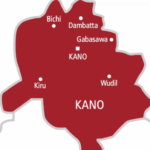An indigene of Kano state and student of PhD in Mass Communication from the University of Nigeria, Nsukka (UNN), Isah Nasidi, has developed a model that will ease the understanding of information disorder ecosystem, otherwise known as fake news.
Nasidi, who is also a young researcher at Premium Times Centre for Investigative Journalism, developed the model called SAMCAV, which is the first of its kind in the study of information disorder and also discovers the fourth typology of information disorder which he called dil-information.
The research is the outcome of the six months research fellowship of the Kwame Kari-Kari Fact-checking and Research Fellowship which selected 17 researchers from four West African countries to research information disorder.
The researcher who is also the Secretary of Communication History Division of International Communication Association (USA) said “the SAMCAV model links six elements of information disorder; the Source, Agent, Message, Channel, Audience and Victim. These elements are involved in the production, distribution and consumption of information disorder. Everyone of these elements plays a vital role in polluting information which makes it unsafe for consumption.”
He added the model will help researchers and policy makers to know how disordered information flows and the effects it causes in the society.
“Conventional communication models such as Harold Lasswell depicts communication as Who says What to Whom with what Effect. However, as abnormal as it is, the information disorder model depicts the flow as Who says What with what Intent through Who and What channel to Whom with what Effect.
“Moreover, the work discovers the concept of ‘dil-information’, as the fourth type of information disorder which has never been considered as an independent typology separate from disinformation, misinformation, and malinformation,” he said.

 Join Daily Trust WhatsApp Community For Quick Access To News and Happenings Around You.
Join Daily Trust WhatsApp Community For Quick Access To News and Happenings Around You.


